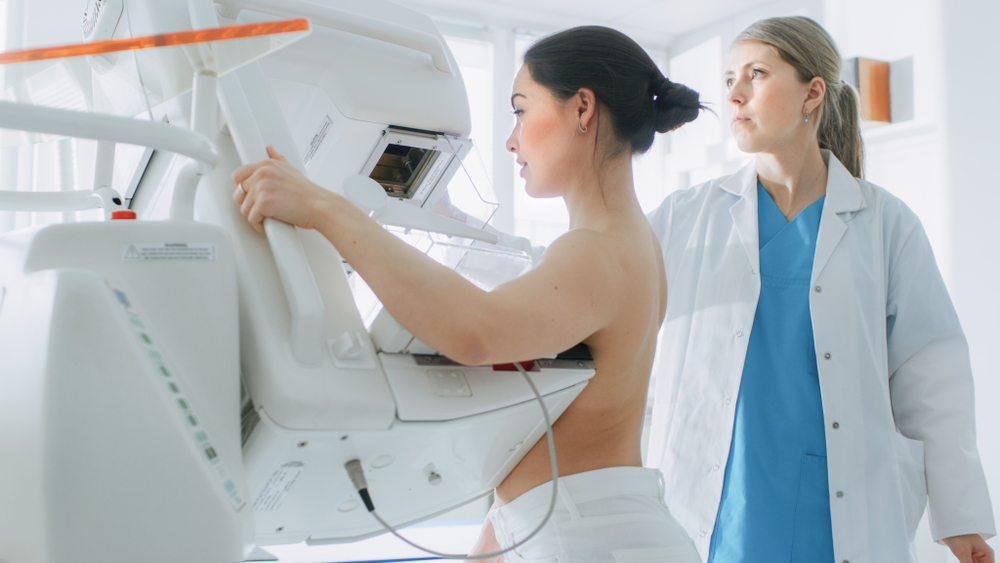When it comes to breast cancer, early detection is everything. In this post, we highlight everything you need to know about early detection of breast cancer, including how to detect breast cancer early, how early a mammogram can detect breast cancer, and why early detection of breast cancer is important.
Read on for information about the different screening tests for breast cancer, signs, and information about mammogram screening guidelines.
Why is Early Detection of Breast Cancer Important?
Early detection of breast cancer means that cancer has had less time to spread and is thus less life-threatening and much easier to treat and even eliminate completely. For many women, they can have breast cancer but show no symptoms, which is why screenings and self-breast exams are important.
According to The American Cancer Society, state-of-the-art cancer treatment and early detection are the two most important ways to prevent deaths from breast cancer.
Early Signs of Breast Cancer
The first sign of breast cancer is typically a small lump in one of your breasts or underarm that doesn’t go away after your period. These lumps are usually painless, however, some women report having a prickly sensation where the lump appears.
Some women may exhibit other symptoms that are not a lump, such as swelling in the breast, dimpling or skin irritation like itching. Here are other common early signs of breast cancer:
- Nipple discharge
- Indented areas on the breast
- Swelling in the armpit or collarbone
- Redness, scaliness, or thickening of the skin on the breast
It’s important to monitor any changes you notice that are unusual to your breasts or in your chest area and speak with a doctor right away to see how they want to proceed forward.
How to Detect Breast Cancer Early
The American Cancer Society states that getting regular screening tests is the most effective way to find breast cancer in its early stages. These guidelines for screening will vary depending on whether your risk for breast cancer is average or high risk. Here are the most common screening tests women may undergo:
Self-breast exam
This is the first step toward detecting breast cancer early. Starting from age 20, it is recommended that you conduct monthly self-breast exams at home. However, it’s important to remember that even if you detect something unusual in your regular self-breast exam, the right next step is to consult with a doctor to decide if your discovery is anything to be worried about.
You can learn more about how to conduct a self-breast exam at home in our article on the topic here.
Clinical breast exam
The clinical breast exam is an exam that is conducted by your doctor when you go in for your annual physical or if you have discovered something unusual during your self-breast exam.
Breast MRI exam
A breast MRI (magnetic breast imaging) uses radio waves and magnets to get an in-depth picture of the tissue inside and ducts inside the breast.
While a breast MRI is typically used for women who have already been diagnosed with breast cancer, it is recommended for women who have been deemed at high risk for breast cancer (along with a mammogram) because the MRI is able to find some cancers that can’t be seen on a mammogram machine.
You can find out more about breast MRI exams in this in-depth article here.
Breast ultrasound
In specific cases, a breast ultrasound is used to examine certain types of changes to the breast. Like the breast MRI, the ultrasound might be used to detect lumps or other abnormality that cannot be picked up by a mammogram as well as for women who have dense breast tissue.
Ultrasound is able to decipher the difference between a harmless fluid-filled cyst or a more solid mass which has a higher likelihood of being cancerous.
You can find out more about breast ultrasounds here.
Mammogram
A mammogram is a low-dose x-ray system that gets a picture of the breast to detect any abnormalities. IT is a special x-ray machine where the woman has her breast flattened by a technician while the x-ray is being taken.
Research shows that early detection of breast cancer can reduce your risk of dying by 25-35%. Mammograms are the most reliable method for detecting breast cancer, and studies show they detect up to 80% of cancerous cases of breast cancer.
If you have the option, it’s a good idea to request to use a facility that specializes in mammograms and can conduct many of them a single day. You can learn more about what to expect during a mammogram here.
Recommended Mammogram Screening Guidelines
Here are a few recommended mammogram screening guidelines, according to the Society of Breast Imaging and the American College of Radiology:
- All women should have a breast cancer risk assessment by age 25
- Women at average risk for breast cancer should receive an annual mammogram starting at age 40 (if you are considered high-risk, you may start screening earlier and benefit from supplemental screening)
- Women continue screening past age 74, unless there are other factors that limit life expectency
These screenings should continue as long as a woman is in good health. Women should also try and familiarize themselves with the known benefits, disadvantages, and potential hazards that come with routine breast cancer screening.
Mammography radiology doesn’t need to be a frightening experience. To date, it’s the best way to detect early breast cancer. We hope this article has helped you understand why early detection of breast cancer is so important and how to detect breast cancer early.
At MagView, we pride ourselves on providing premier breast imaging tracking solutions for facilities around the country. Check out our services and products today.
























![monitoring breast density shutterstock_1299510538-[Converted]](https://magview.com/wp-content/uploads/2023/05/shutterstock_1299510538-Converted.jpg)






















